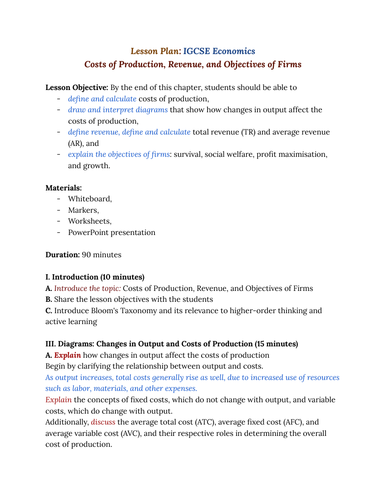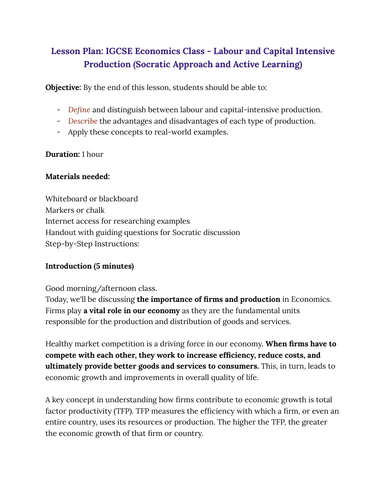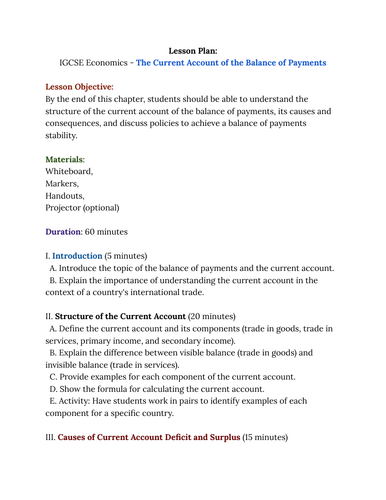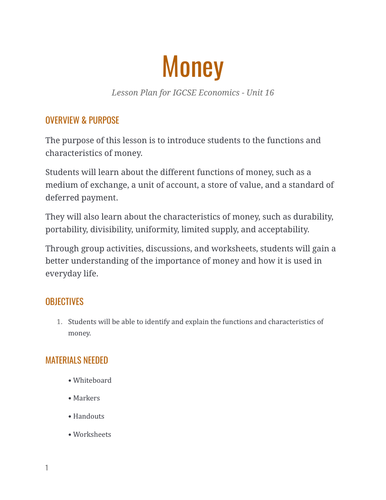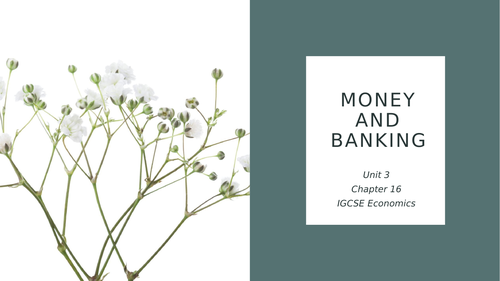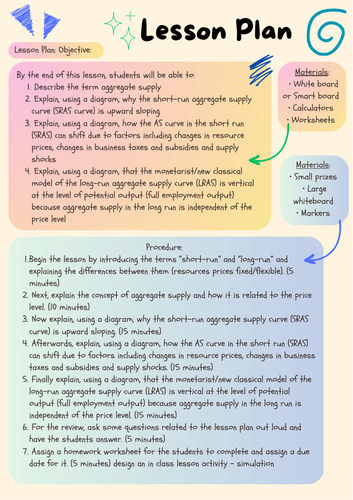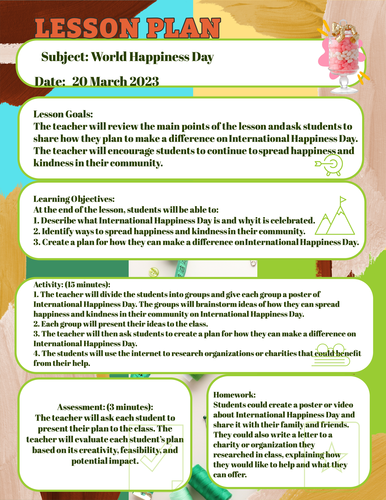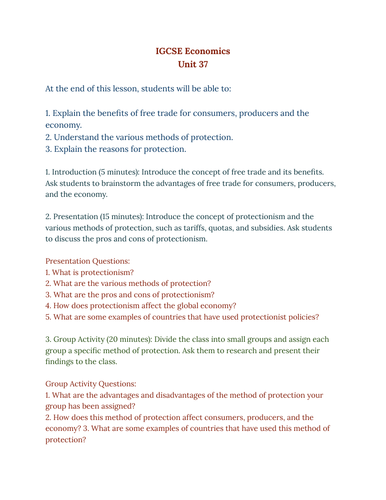9Uploads
1k+Views
1k+Downloads
All resources

Living Standards IGCSE Economics
This is a complete lesson with a starter, activities and a plenary idea for Unit 32 Living Standards - IGCSE Economics.
Students use the collaborative learning approach known as think-pair-share (TPS) to work together to solve a problem or respond to a question regarding a given reading.
Students must (1) think independently about a subject or response to a question; and (2) share ideas with classmates as part of this method.
I hope this helps your students understand the topic better.
Leave me a review and pick any other resource for free :)

IGCSE - Unit 22 - Firms Costs and Revenue LPS
This lesson plan teaches Costs of Production, Revenue, and Objectives of Firms through various activities like discussions, case studies & quizzes and ends with a review & assessment. Your feedback helps us improve our services and enhance your future experience. We welcome all feedback. Please let us know how we can make your experience better. Thank you for your support!

IGCSE Economics - Unit 21 - Firms and Production
This lesson plan explores labour & capital-intensive production in economics. Engage students with real-world examples, discussions & essay. Strengthen understanding through various activities like discussions, case studies & quizzes and ends with a review & assessment. Thank you for your support!

IGCSE Economics - The Current Account of the Balance of Payments
In this interactive economics activity, students will explore the current account and its implications, with country profiles and transaction examples.
By simulating transactions between countries, students will learn about the balance of payments and how international trade and investment affect a country’s economy.
Encourages critical thinking and policy analysis.
Download this lesson today and engage your students with a fun and informative economics activity.

IGCSE Economics - Unit 16 - Money
The purpose of this lesson is to introduce students to the functions and characteristics of money.
Students will learn about the different functions of money, such as a medium of exchange, a unit of account, a store of value, and a standard of deferred payment.
They will also learn about the characteristics of money, such as durability, portability, divisibility, uniformity, limited supply, and acceptability.
Through group activities, discussions, and worksheets, students will gain a better understanding of the importance of money and how it is used in everyday life.

Unit 3.1 Money and Banking - Chapter 16
This Powerpoint Lesson on Money and Banking is targeted to help students understand the basics of money and banking. This resource is particularly useful for teachers who are seeking to teach these concepts to their students in a simple and straightforward manner.
Suitable for home schoolers and individuals who are interested in learning more about the topic of money and banking.

Aggregate Supply (AS) - IBDP Economics
Our lesson plans are designed to help you teach aggregate supply in a fun and engaging way.
Our active learning approach includes group work, large scale diagrams, and scenario interpretation to help students understand shifts in aggregate supply and demand. We also provide differentiated activities to meet the needs of all learners.
Specifically designed to help you teach the Aggregate Demand and Supply chapter. Don’t miss out on this opportunity to improve your teaching and help your students succeed.

International Happiness Day Lesson Plan
Celebrate International Happiness Day with this engaging lesson plan! Students will explore what International Happiness Day is and why it is celebrated, identify ways to spread happiness and kindness in their community, and create a plan for how they can make a difference on International Happiness Day.
With fun activities, an assessment, and a closure that reviews the main points, this lesson plan is sure to get your students excited about International Happiness Day!

IGCSE Economics - Unit 37 - Free Trade and Methods of Protection
This teaching resource is designed to help students understand the concepts of free trade and protectionism.
The lesson plan includes an introduction, presentation, group activity, and discussion. The formative assessment rubric and ideas help to assess students’ understanding of the concepts.
This resource is suitable for economics classes at the secondary school level and can be adapted to fit different learning styles and needs.


